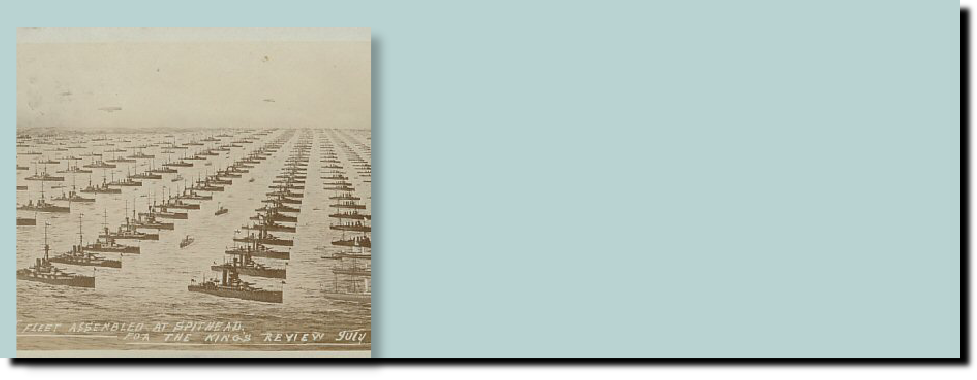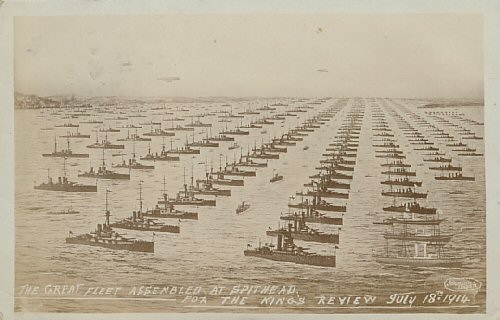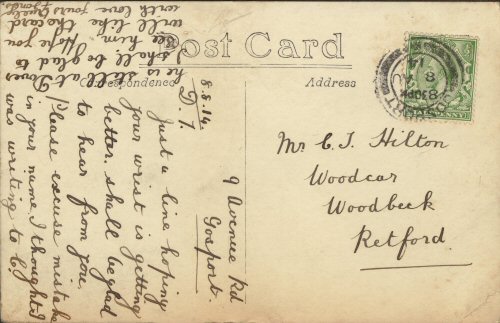
© Lindy and Martin Lovegrove 2012

The Grand Fleet

At the height of the July Crisis the commander of the core of Britain's Royal Navy - the vast Home Fleet - Sir George Callaghan, was instructed to move the fleet to its wartime port at Scapa Flow in the Orkneys.
Callaghan was not however to be the fleet's wartime commander. Both Winston Churchill, the First Lord of the Admiralty, and Admiral John Fisher (the returning First Sea Lord), believed Callaghan ill-suited to the coming task of overseeing the direction of the single most potent weapon of war of any nation.
Thus Admiral Sir John Jellicoe, a long-time protégé of Fisher, was handed the post of commander of the renamed Grand Fleet on the day that Britain declared war upon Germany, 4 August 1914. He commanded the fleet from the dreadnought class Iron Duke.
The Grand Fleet had been designed both as a deterrent - its size effectively precluded large-scale attacks upon Britain by sea - and in readiness for the long-expected grand encounter with Germany's burgeoning Home Seas Fleet. Crucial to the latter was a determination to ensure British supremacy both in terms of numbers and in size. During his earlier term as First Sea Lord, Fisher had overseen the development of the mammoth dreadnought class of battleship (the first of which, HMS Dreadnought, entered service in December 1906).
Germany, determined to develop a navy equal to that of Britain under the direction of both the Kaiser, (Wilhelm II), and the naval minister, Admiral Tirpitz, imitated British dreadnought designs but was ultimately outstripped in production by British determination to preserve its naval advantage (ultimately by a 22 to 14 dreadnought advantage). During the First World War the British Grand Fleet comprised some 35-40 state-of-the-art battleships and battlecruisers in addition to a wide array of destroyers, cruisers, aircraft carriers and submarines.
During wartime the Grand Fleet was used as a means of imposing a naval blockade upon Germany; it was sufficiently effective to produce official complaints from the U.S. government who saw naval trade links with Germany plummet in value as the blockade increasingly took hold.
Given the enormous importance and prestige of the Grand Fleet its wartime commanders, Jellicoe and Admiral Sir David Beatty, proved reluctant to risk it in battle especially given the ever-present German U-boat threat, aside from the inconclusive Battle of Jutland of 31 May/1 June 1916 which was overseen by Jellicoe.
Jutland saw Germany inflict greater damage upon the British fleet; however royal fright at the risks run during the encounter led the Kaiser to forbid a repeat performance, leading to something of a wide strategic victory for the British.
At the time of the Jutland battle the Grand Fleet consisted of four Battle Squadrons of which the 1st, 2nd and 4th comprised some 25 Dreadnought battleships; the 3rd consisted of a further 8 pre-Dreadnoughts.
In the wake of Jutland, Jellicoe was promoted to First Sea Lord (Fisher having abruptly resigned in an ongoing dispute over Gallipoli with Churchill in 1915). Beatty was appointed commander of the Grand Fleet in Jellicoe's place.
The Grand Fleet

